Evidence-Based Educational Tool on Youth Depression and Management
VerifiedAdded on 2023/04/25
|16
|1797
|291
Project
AI Summary
This project provides an educational tool aimed at teenagers and young adults (15-22 years old) to address the prevalent issue of depression. The tool identifies knowledge gaps regarding depression, its signs, symptoms, and effective management techniques. It also functions as a crisis intervention resource, offering counseling services to help the target population cope with depression. The document begins by defining depression, highlighting its global impact and prevalence among the youth, and the common effects on individuals. It then explores the educational gap related to mental health, including the lack of awareness and treatment seeking behavior. Evidence-based management strategies are presented, including psychotherapy, lifestyle changes, and pharmacological interventions. The project concludes by emphasizing the need for increased awareness and support for young people struggling with depression, including references to the World Health Organization and the Australian Bureau of Statistics.
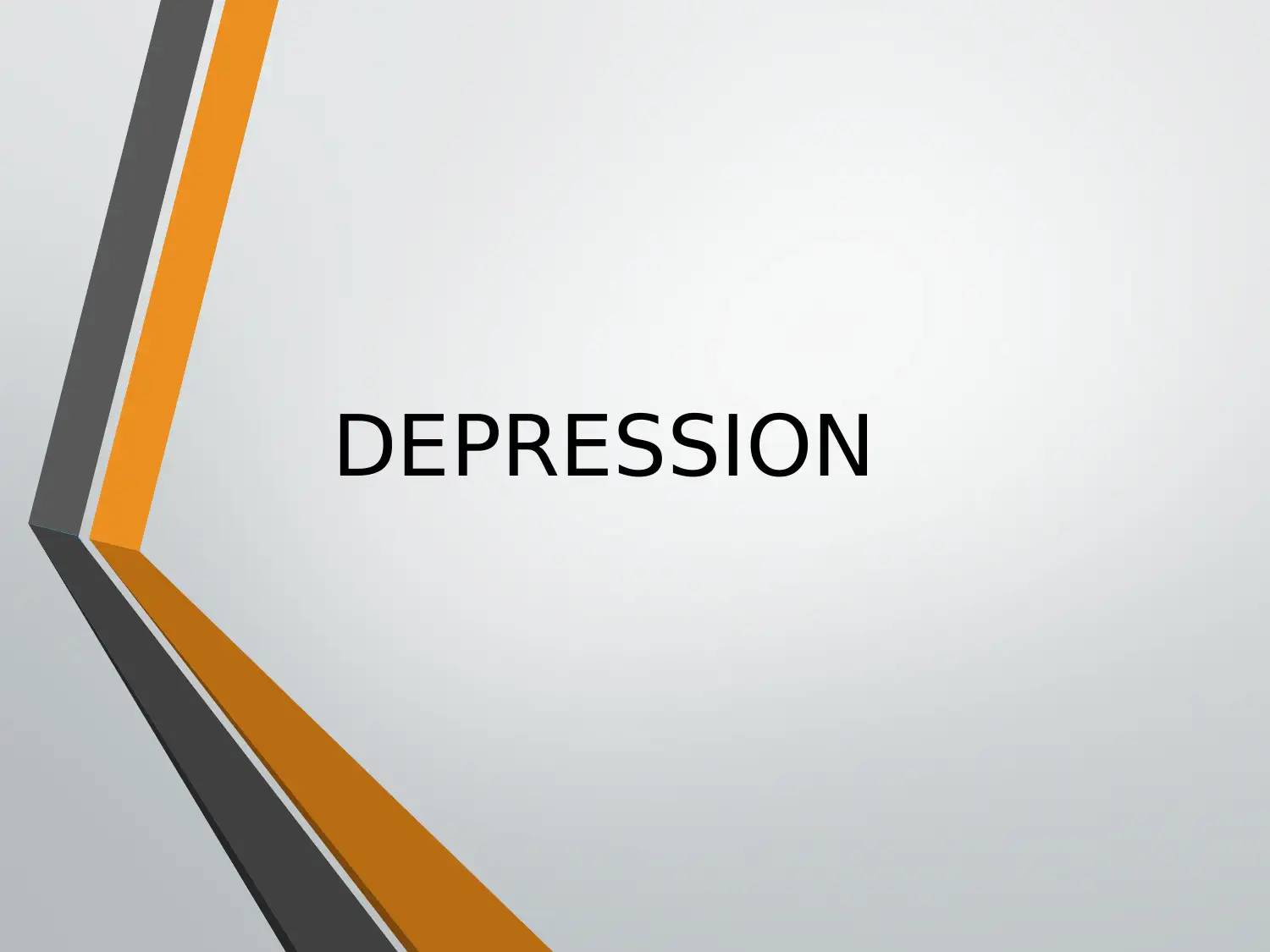
DEPRESSION
Paraphrase This Document
Need a fresh take? Get an instant paraphrase of this document with our AI Paraphraser
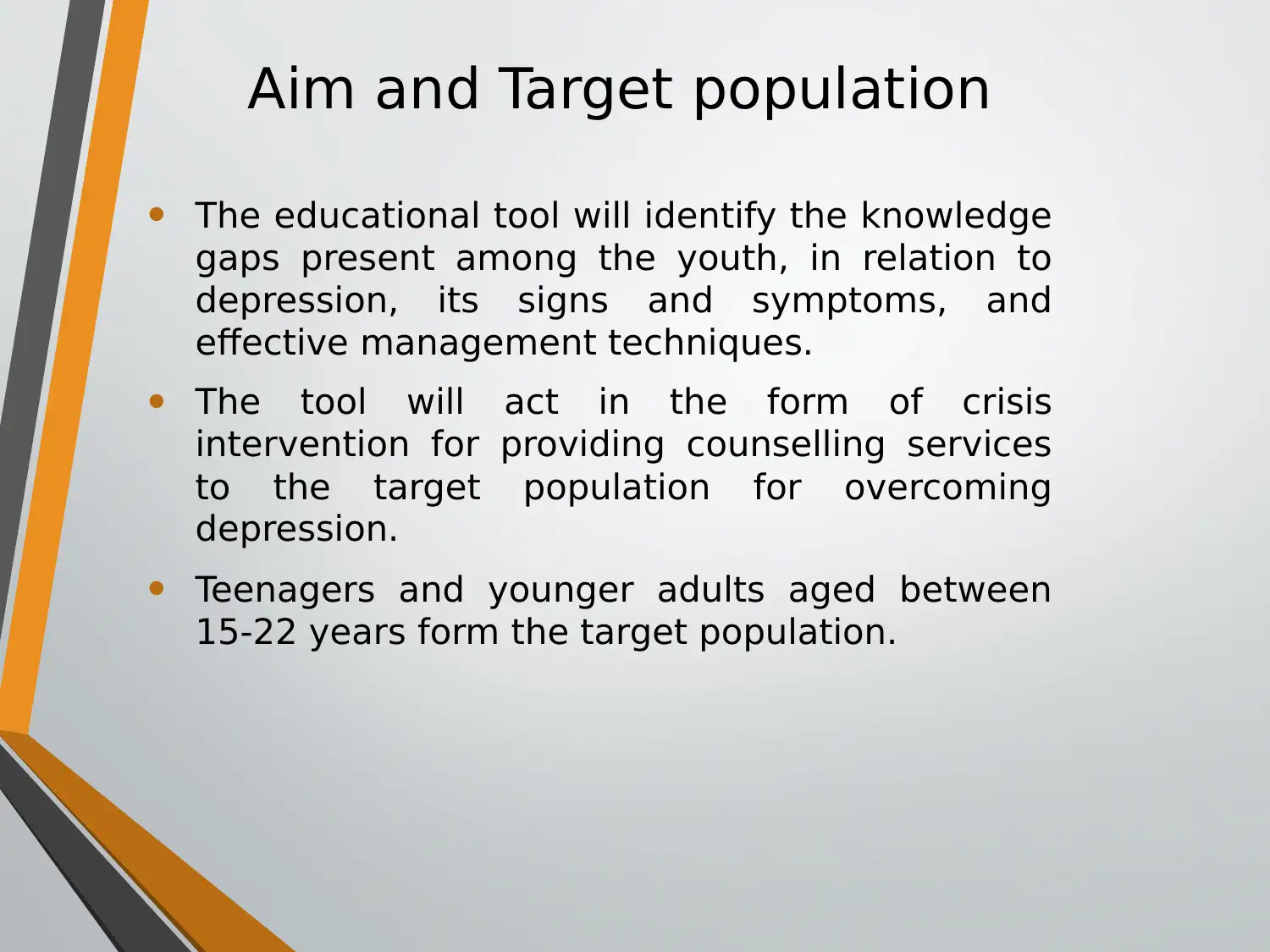
Aim and Target population
• The educational tool will identify the knowledge
gaps present among the youth, in relation to
depression, its signs and symptoms, and
effective management techniques.
• The tool will act in the form of crisis
intervention for providing counselling services
to the target population for overcoming
depression.
• Teenagers and younger adults aged between
15-22 years form the target population.
• The educational tool will identify the knowledge
gaps present among the youth, in relation to
depression, its signs and symptoms, and
effective management techniques.
• The tool will act in the form of crisis
intervention for providing counselling services
to the target population for overcoming
depression.
• Teenagers and younger adults aged between
15-22 years form the target population.
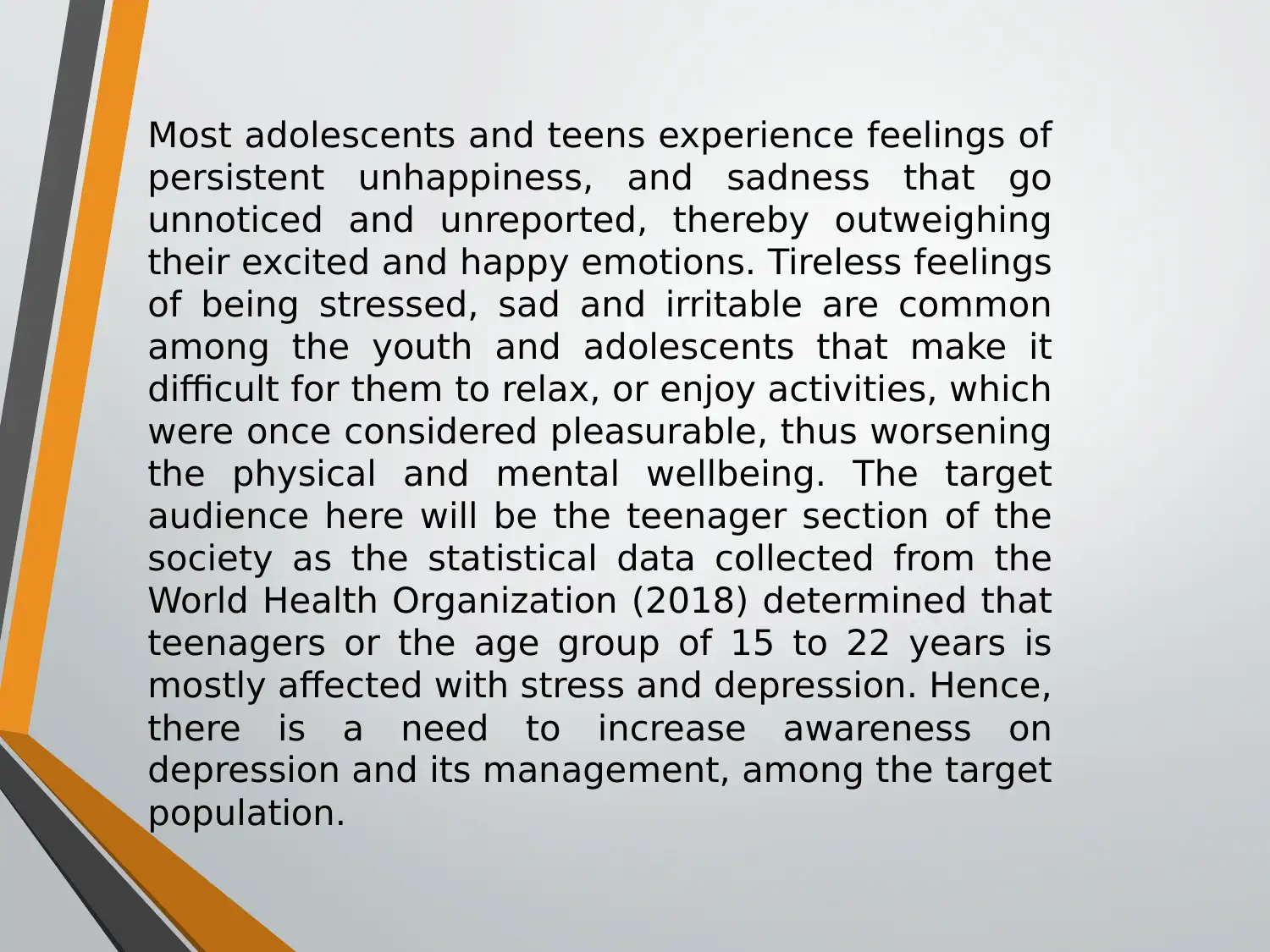
Most adolescents and teens experience feelings of
persistent unhappiness, and sadness that go
unnoticed and unreported, thereby outweighing
their excited and happy emotions. Tireless feelings
of being stressed, sad and irritable are common
among the youth and adolescents that make it
difficult for them to relax, or enjoy activities, which
were once considered pleasurable, thus worsening
the physical and mental wellbeing. The target
audience here will be the teenager section of the
society as the statistical data collected from the
World Health Organization (2018) determined that
teenagers or the age group of 15 to 22 years is
mostly affected with stress and depression. Hence,
there is a need to increase awareness on
depression and its management, among the target
population.
persistent unhappiness, and sadness that go
unnoticed and unreported, thereby outweighing
their excited and happy emotions. Tireless feelings
of being stressed, sad and irritable are common
among the youth and adolescents that make it
difficult for them to relax, or enjoy activities, which
were once considered pleasurable, thus worsening
the physical and mental wellbeing. The target
audience here will be the teenager section of the
society as the statistical data collected from the
World Health Organization (2018) determined that
teenagers or the age group of 15 to 22 years is
mostly affected with stress and depression. Hence,
there is a need to increase awareness on
depression and its management, among the target
population.
⊘ This is a preview!⊘
Do you want full access?
Subscribe today to unlock all pages.

Trusted by 1+ million students worldwide
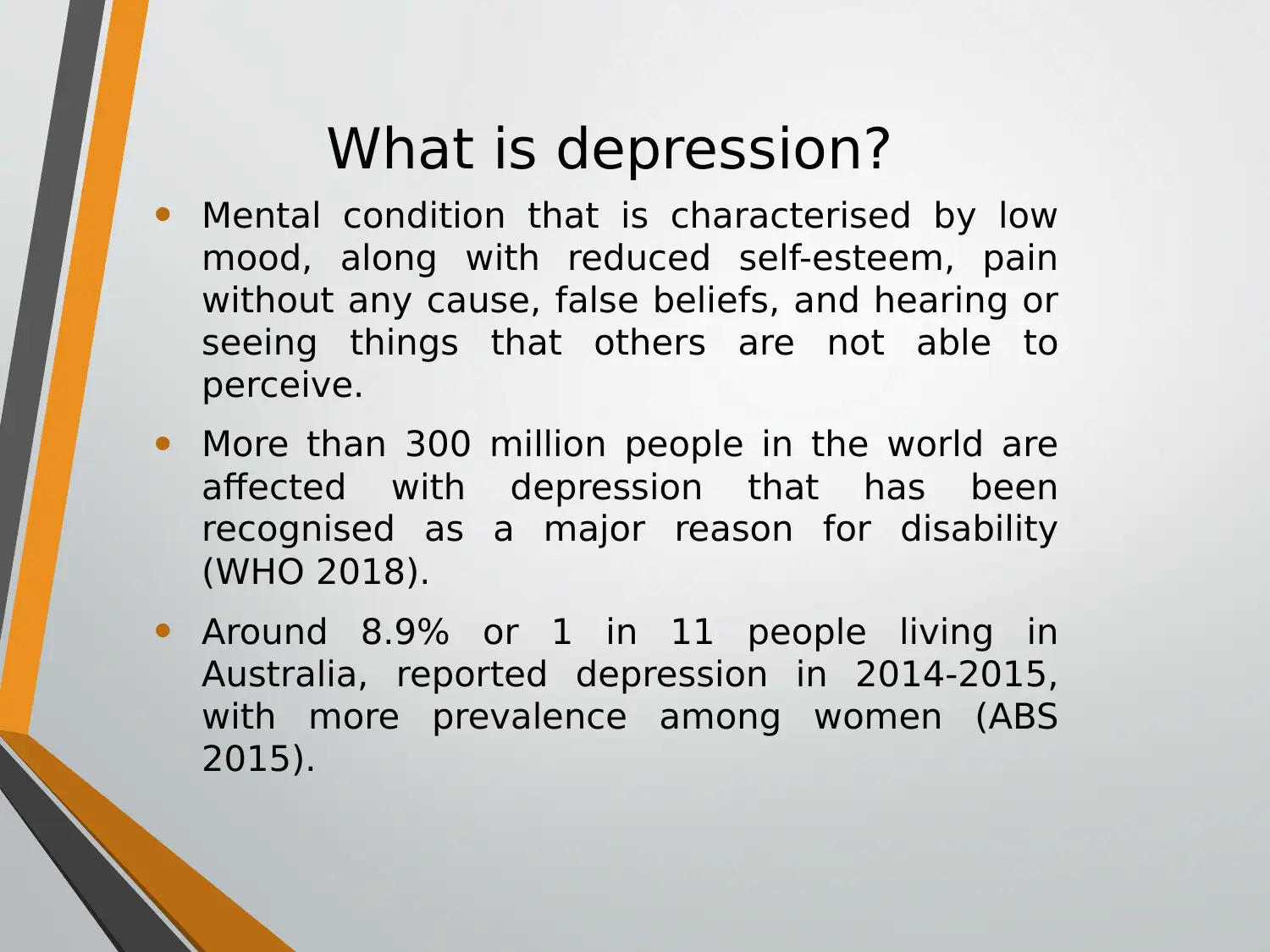
What is depression?
• Mental condition that is characterised by low
mood, along with reduced self-esteem, pain
without any cause, false beliefs, and hearing or
seeing things that others are not able to
perceive.
• More than 300 million people in the world are
affected with depression that has been
recognised as a major reason for disability
(WHO 2018).
• Around 8.9% or 1 in 11 people living in
Australia, reported depression in 2014-2015,
with more prevalence among women (ABS
2015).
• Mental condition that is characterised by low
mood, along with reduced self-esteem, pain
without any cause, false beliefs, and hearing or
seeing things that others are not able to
perceive.
• More than 300 million people in the world are
affected with depression that has been
recognised as a major reason for disability
(WHO 2018).
• Around 8.9% or 1 in 11 people living in
Australia, reported depression in 2014-2015,
with more prevalence among women (ABS
2015).
Paraphrase This Document
Need a fresh take? Get an instant paraphrase of this document with our AI Paraphraser
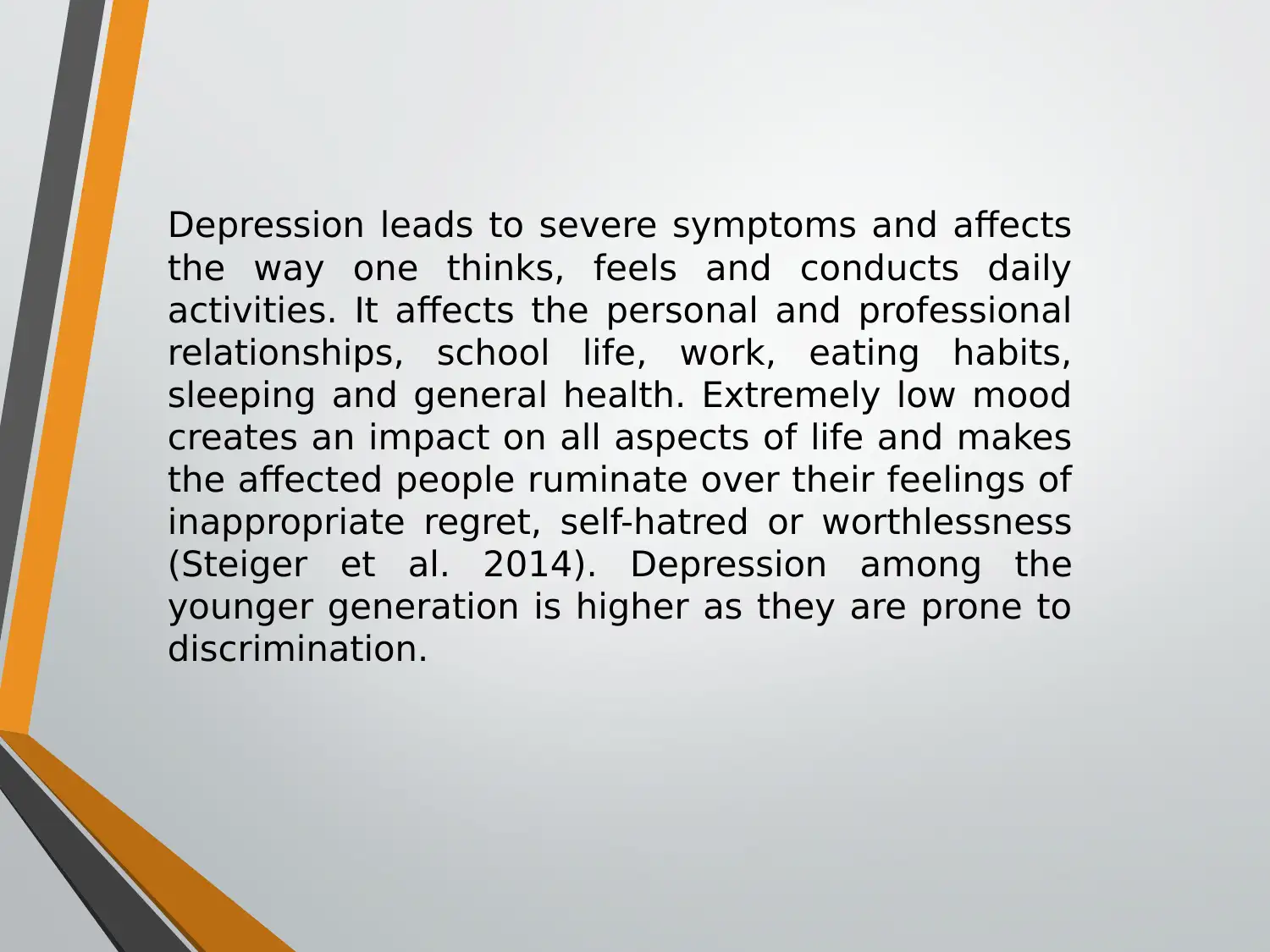
Depression leads to severe symptoms and affects
the way one thinks, feels and conducts daily
activities. It affects the personal and professional
relationships, school life, work, eating habits,
sleeping and general health. Extremely low mood
creates an impact on all aspects of life and makes
the affected people ruminate over their feelings of
inappropriate regret, self-hatred or worthlessness
(Steiger et al. 2014). Depression among the
younger generation is higher as they are prone to
discrimination.
the way one thinks, feels and conducts daily
activities. It affects the personal and professional
relationships, school life, work, eating habits,
sleeping and general health. Extremely low mood
creates an impact on all aspects of life and makes
the affected people ruminate over their feelings of
inappropriate regret, self-hatred or worthlessness
(Steiger et al. 2014). Depression among the
younger generation is higher as they are prone to
discrimination.
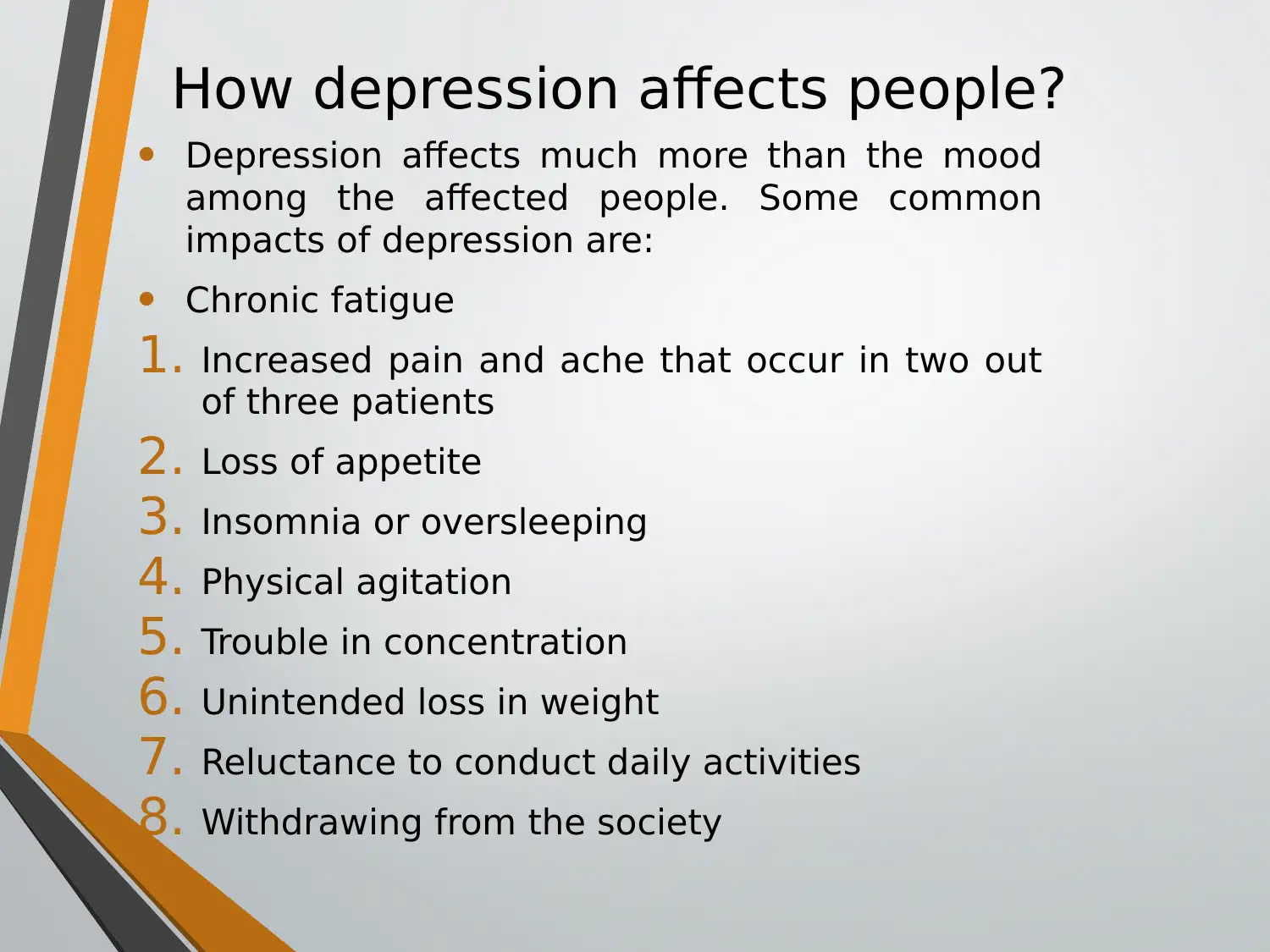
How depression affects people?
• Depression affects much more than the mood
among the affected people. Some common
impacts of depression are:
• Chronic fatigue
1. Increased pain and ache that occur in two out
of three patients
2. Loss of appetite
3. Insomnia or oversleeping
4. Physical agitation
5. Trouble in concentration
6. Unintended loss in weight
7. Reluctance to conduct daily activities
8. Withdrawing from the society
• Depression affects much more than the mood
among the affected people. Some common
impacts of depression are:
• Chronic fatigue
1. Increased pain and ache that occur in two out
of three patients
2. Loss of appetite
3. Insomnia or oversleeping
4. Physical agitation
5. Trouble in concentration
6. Unintended loss in weight
7. Reluctance to conduct daily activities
8. Withdrawing from the society
⊘ This is a preview!⊘
Do you want full access?
Subscribe today to unlock all pages.

Trusted by 1+ million students worldwide
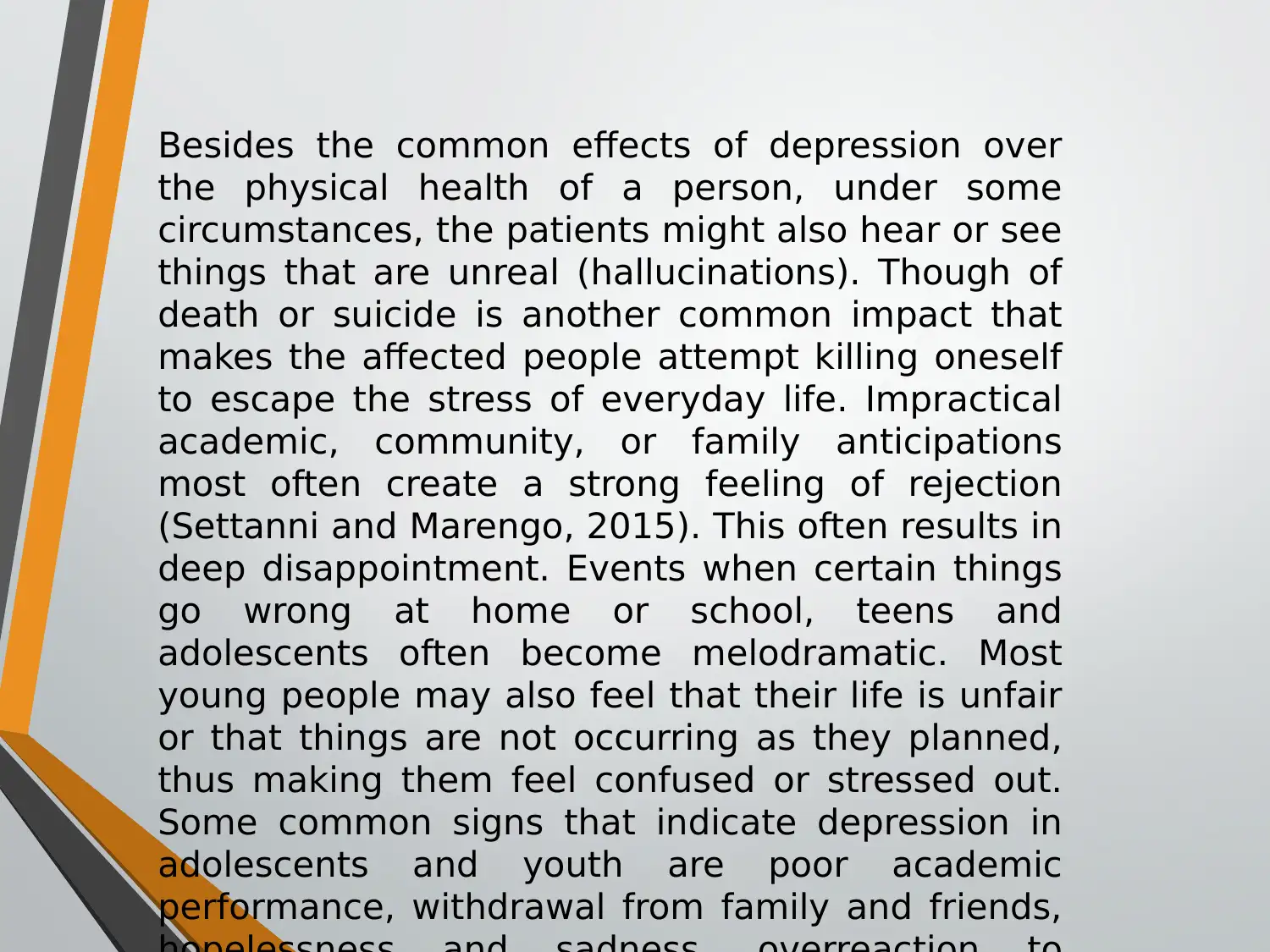
Besides the common effects of depression over
the physical health of a person, under some
circumstances, the patients might also hear or see
things that are unreal (hallucinations). Though of
death or suicide is another common impact that
makes the affected people attempt killing oneself
to escape the stress of everyday life. Impractical
academic, community, or family anticipations
most often create a strong feeling of rejection
(Settanni and Marengo, 2015). This often results in
deep disappointment. Events when certain things
go wrong at home or school, teens and
adolescents often become melodramatic. Most
young people may also feel that their life is unfair
or that things are not occurring as they planned,
thus making them feel confused or stressed out.
Some common signs that indicate depression in
adolescents and youth are poor academic
performance, withdrawal from family and friends,
the physical health of a person, under some
circumstances, the patients might also hear or see
things that are unreal (hallucinations). Though of
death or suicide is another common impact that
makes the affected people attempt killing oneself
to escape the stress of everyday life. Impractical
academic, community, or family anticipations
most often create a strong feeling of rejection
(Settanni and Marengo, 2015). This often results in
deep disappointment. Events when certain things
go wrong at home or school, teens and
adolescents often become melodramatic. Most
young people may also feel that their life is unfair
or that things are not occurring as they planned,
thus making them feel confused or stressed out.
Some common signs that indicate depression in
adolescents and youth are poor academic
performance, withdrawal from family and friends,
Paraphrase This Document
Need a fresh take? Get an instant paraphrase of this document with our AI Paraphraser
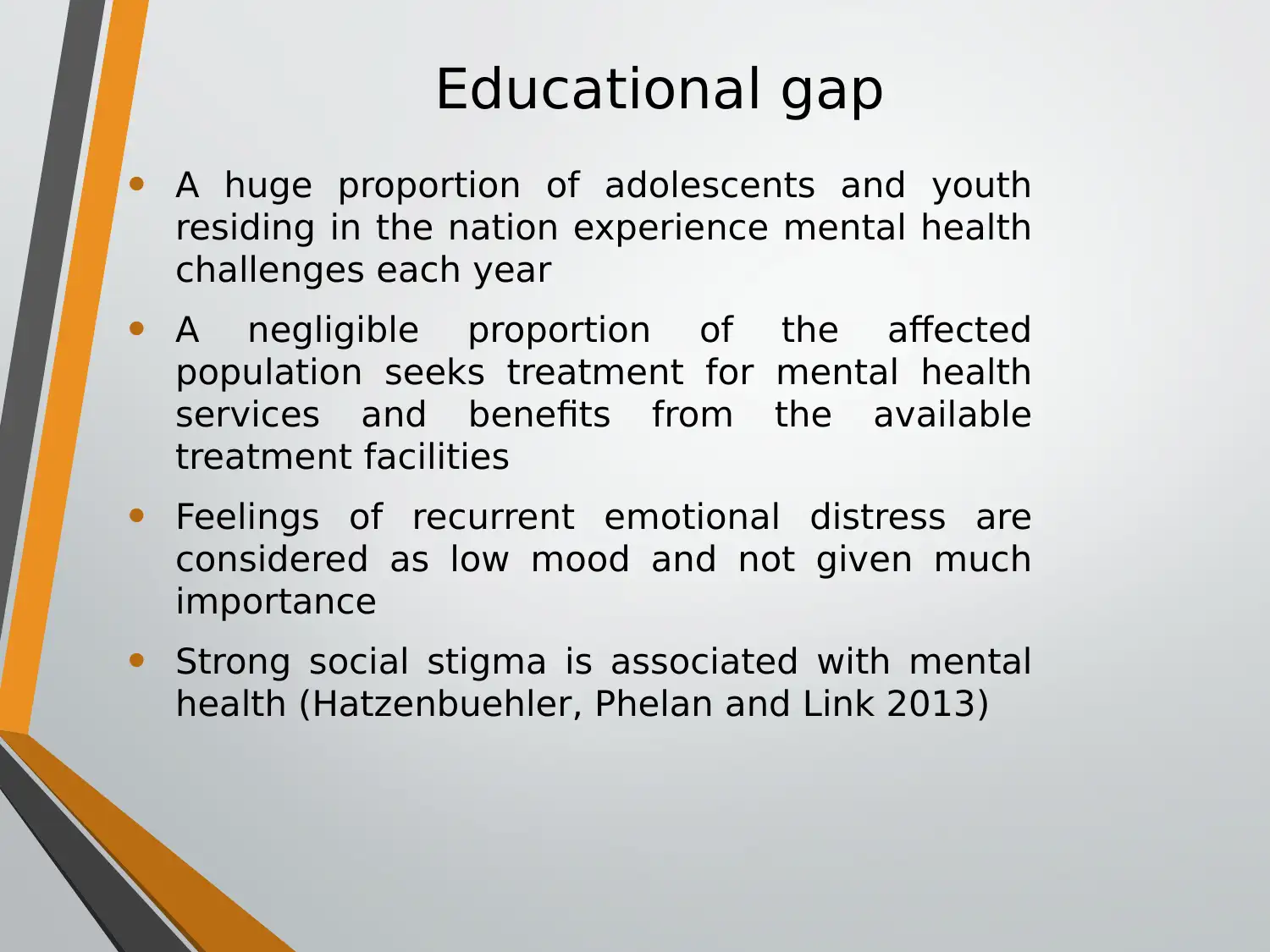
Educational gap
• A huge proportion of adolescents and youth
residing in the nation experience mental health
challenges each year
• A negligible proportion of the affected
population seeks treatment for mental health
services and benefits from the available
treatment facilities
• Feelings of recurrent emotional distress are
considered as low mood and not given much
importance
• Strong social stigma is associated with mental
health (Hatzenbuehler, Phelan and Link 2013)
• A huge proportion of adolescents and youth
residing in the nation experience mental health
challenges each year
• A negligible proportion of the affected
population seeks treatment for mental health
services and benefits from the available
treatment facilities
• Feelings of recurrent emotional distress are
considered as low mood and not given much
importance
• Strong social stigma is associated with mental
health (Hatzenbuehler, Phelan and Link 2013)
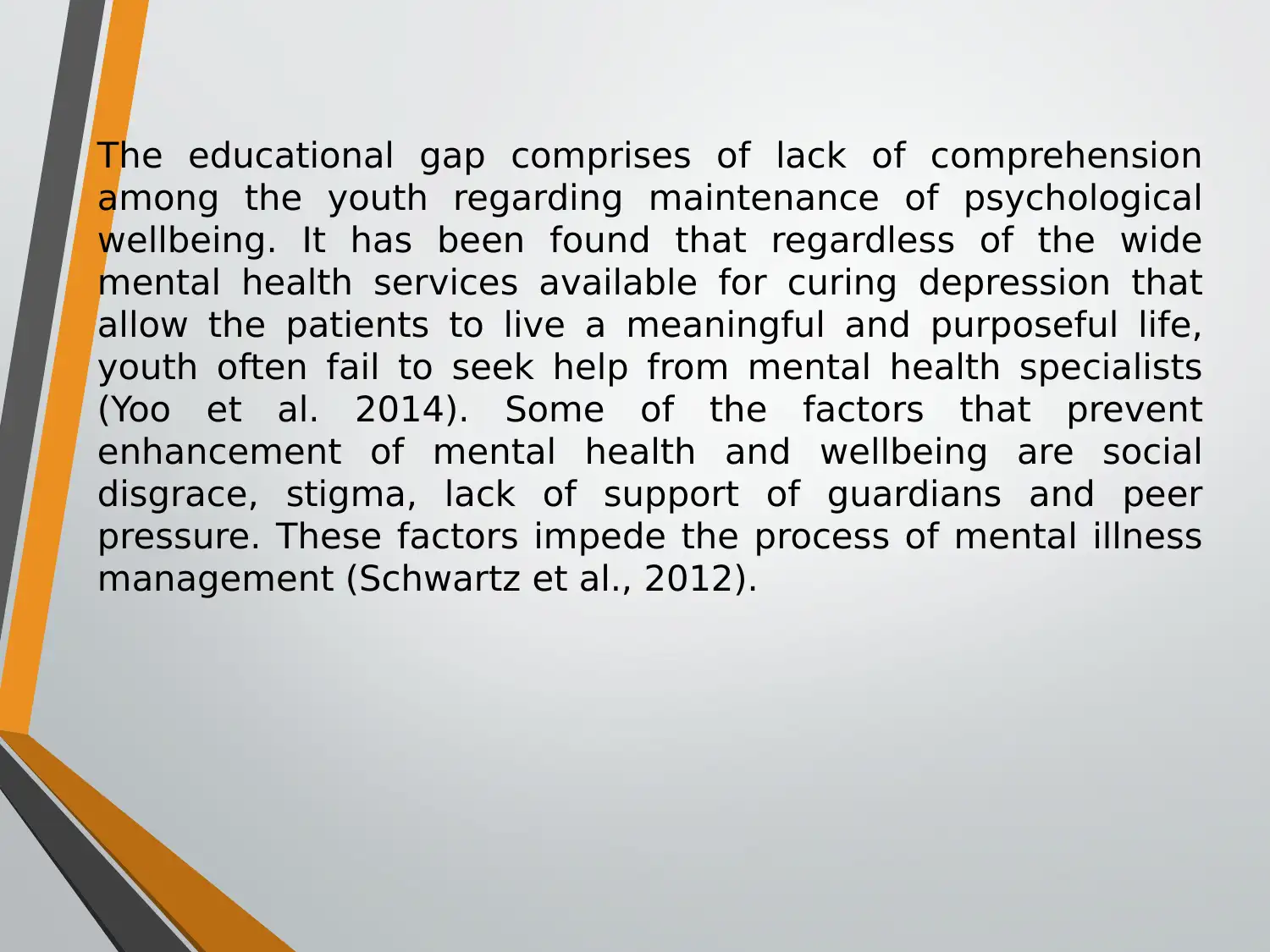
The educational gap comprises of lack of comprehension
among the youth regarding maintenance of psychological
wellbeing. It has been found that regardless of the wide
mental health services available for curing depression that
allow the patients to live a meaningful and purposeful life,
youth often fail to seek help from mental health specialists
(Yoo et al. 2014). Some of the factors that prevent
enhancement of mental health and wellbeing are social
disgrace, stigma, lack of support of guardians and peer
pressure. These factors impede the process of mental illness
management (Schwartz et al., 2012).
among the youth regarding maintenance of psychological
wellbeing. It has been found that regardless of the wide
mental health services available for curing depression that
allow the patients to live a meaningful and purposeful life,
youth often fail to seek help from mental health specialists
(Yoo et al. 2014). Some of the factors that prevent
enhancement of mental health and wellbeing are social
disgrace, stigma, lack of support of guardians and peer
pressure. These factors impede the process of mental illness
management (Schwartz et al., 2012).
⊘ This is a preview!⊘
Do you want full access?
Subscribe today to unlock all pages.

Trusted by 1+ million students worldwide
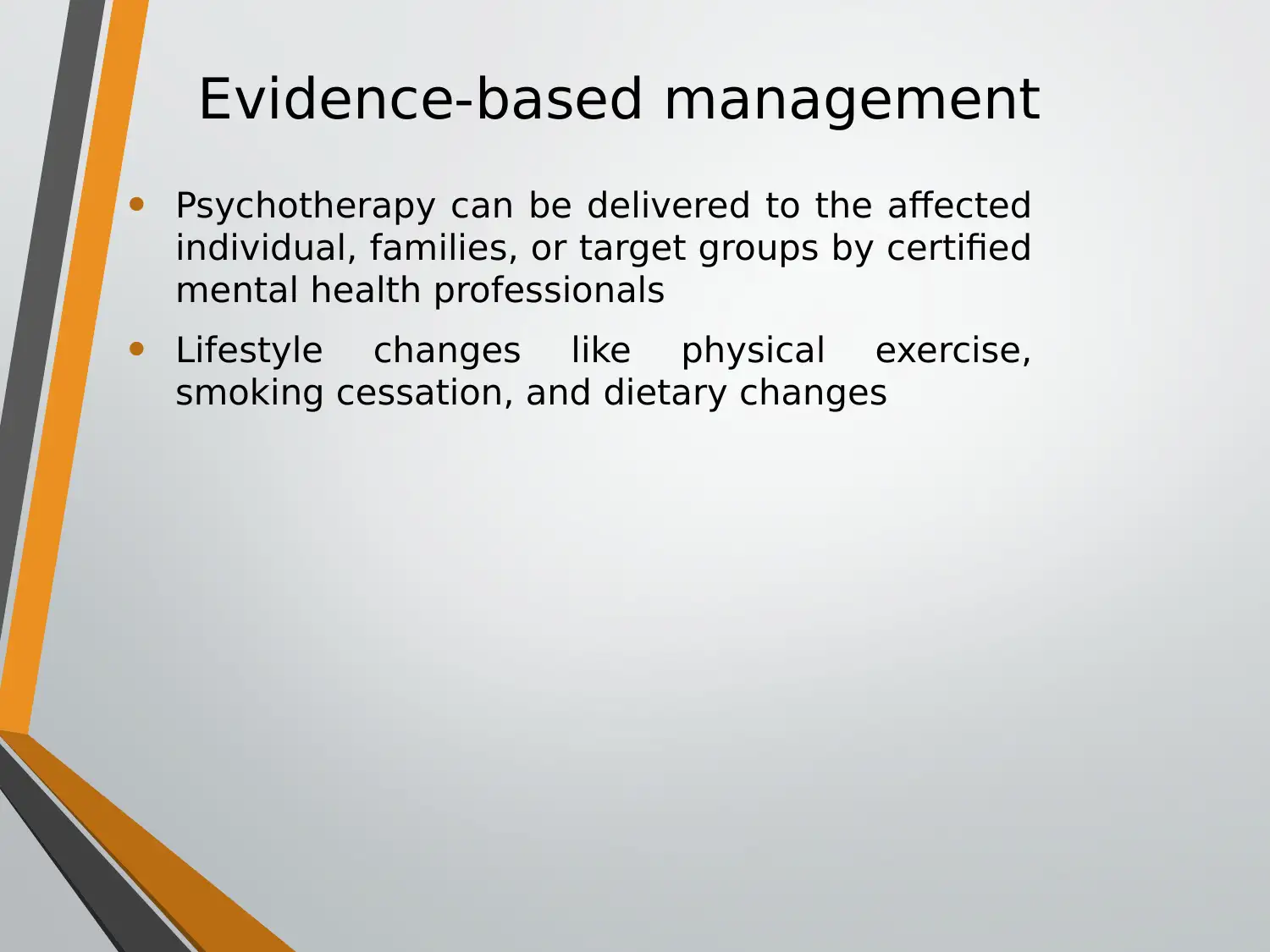
Evidence-based management
• Psychotherapy can be delivered to the affected
individual, families, or target groups by certified
mental health professionals
• Lifestyle changes like physical exercise,
smoking cessation, and dietary changes
• Psychotherapy can be delivered to the affected
individual, families, or target groups by certified
mental health professionals
• Lifestyle changes like physical exercise,
smoking cessation, and dietary changes
Paraphrase This Document
Need a fresh take? Get an instant paraphrase of this document with our AI Paraphraser

Psychotherapy treatment encompass personal
interaction and help the affected person to alter
the problematic behaviour, thus facilitating
overcoming the depression symptoms (Cuijpers et
al. 2014). This treatment strategy improves the
mental wellbeing of the depressed person, and
helps in resolving or mitigating compulsions,
thoughts, emotions, beliefs, thus improving social
skills and relationships. The sessions are typically
held once or twice a week, and last for not more
than one hour. Lifestyle changes are equivalent to
medications and decrease the severity of
depression, increase self-esteem, create
empowerment, enhance social connections, and
boost self-confidence. Healthy diet will promote
release of neurotransmitters (Taylor et al. 2014). In
addition, restorative sleep will alleviate
depression, by maintaining a balanced brain
interaction and help the affected person to alter
the problematic behaviour, thus facilitating
overcoming the depression symptoms (Cuijpers et
al. 2014). This treatment strategy improves the
mental wellbeing of the depressed person, and
helps in resolving or mitigating compulsions,
thoughts, emotions, beliefs, thus improving social
skills and relationships. The sessions are typically
held once or twice a week, and last for not more
than one hour. Lifestyle changes are equivalent to
medications and decrease the severity of
depression, increase self-esteem, create
empowerment, enhance social connections, and
boost self-confidence. Healthy diet will promote
release of neurotransmitters (Taylor et al. 2014). In
addition, restorative sleep will alleviate
depression, by maintaining a balanced brain
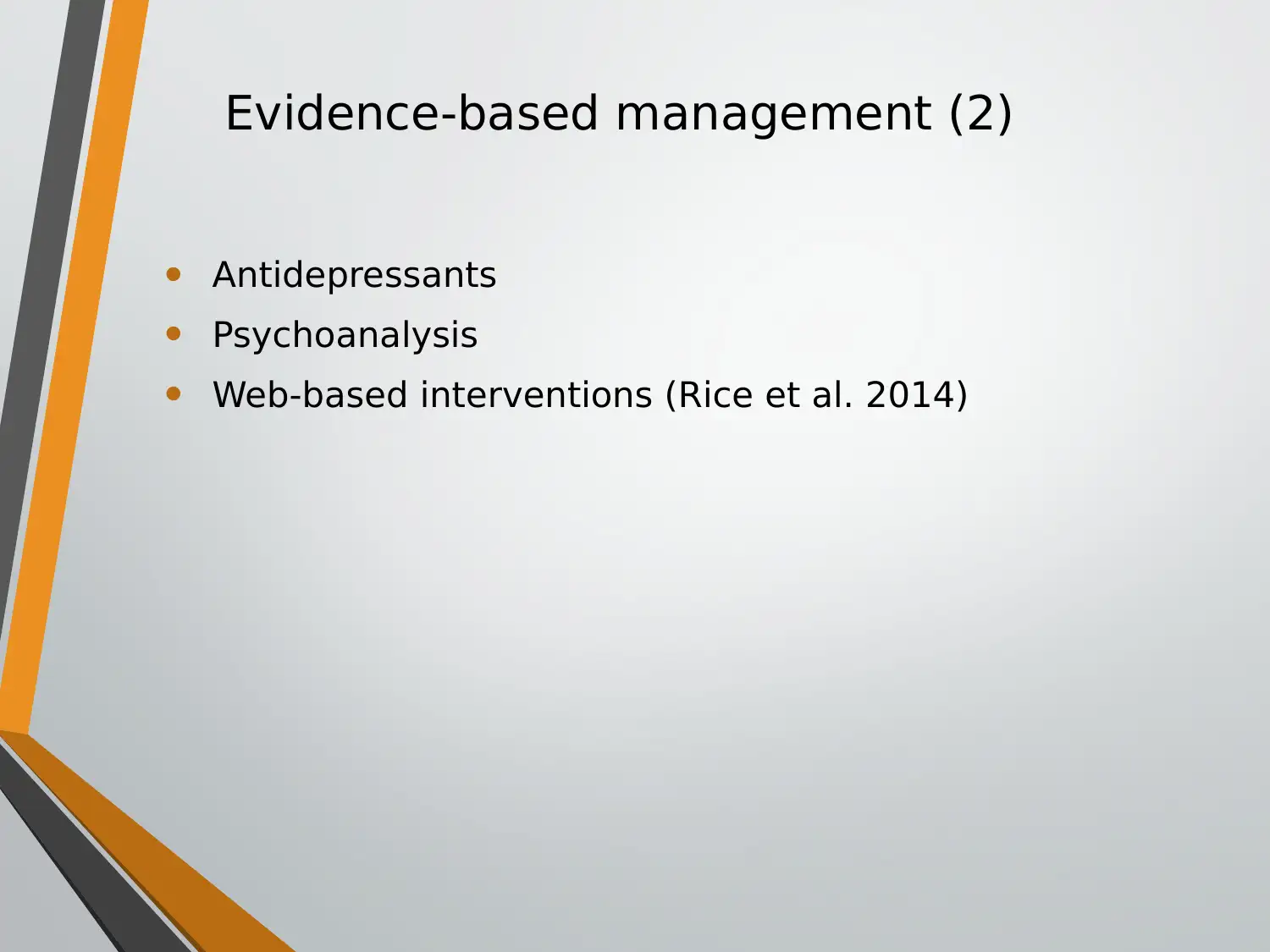
Evidence-based management (2)
• Antidepressants
• Psychoanalysis
• Web-based interventions (Rice et al. 2014)
• Antidepressants
• Psychoanalysis
• Web-based interventions (Rice et al. 2014)
⊘ This is a preview!⊘
Do you want full access?
Subscribe today to unlock all pages.

Trusted by 1+ million students worldwide
1 out of 16
Related Documents
Your All-in-One AI-Powered Toolkit for Academic Success.
+13062052269
info@desklib.com
Available 24*7 on WhatsApp / Email
![[object Object]](/_next/static/media/star-bottom.7253800d.svg)
Unlock your academic potential
Copyright © 2020–2025 A2Z Services. All Rights Reserved. Developed and managed by ZUCOL.





